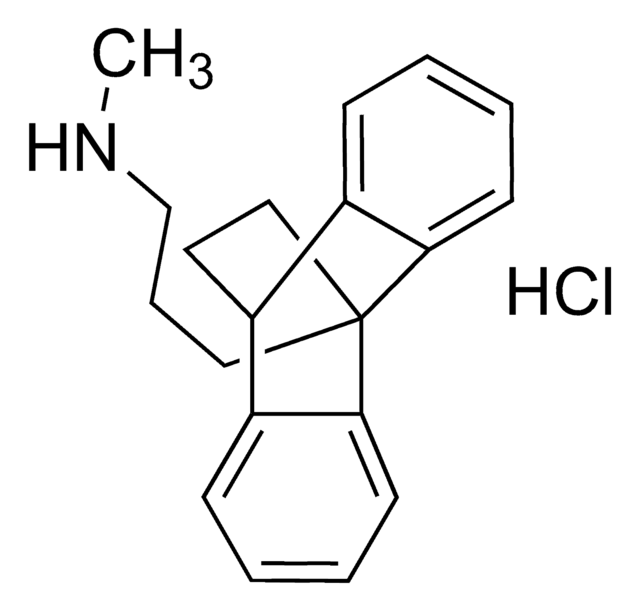C-010
Cocaethylene solution
1.0 mg/mL in acetonitrile, ampule of 1 mL, certified reference material, Cerilliant®
Synonym(s):
Benzoylecgonine ethyl ester
About This Item
Recommended Products
grade
certified reference material
form
liquid
feature
SNAP-N-SPIKE®, SNAP-N-SHOOT®
packaging
ampule of 1 mL
manufacturer/tradename
Cerilliant®
drug control
Narcotic Licence Schedule A (Switzerland); estupefaciente (Spain); Decreto Lei 15/93: Tabela IB (Portugal)
concentration
1.0 mg/mL in acetonitrile
technique(s)
gas chromatography (GC): suitable
liquid chromatography (LC): suitable
application(s)
forensics and toxicology
format
single component solution
storage temp.
−20°C
SMILES string
CN1[C@@]2([H])[C@@H](C(OCC)=O)[C@@H](OC(C3=CC=CC=C3)=O)C[C@]1([H])CC2
InChI
1S/C18H23NO4/c1-3-22-18(21)16-14-10-9-13(19(14)2)11-15(16)23-17(20)12-7-5-4-6-8-12/h4-8,13-16H,3,9-11H2,1-2H3/t13-,14+,15-,16+/m0/s1
InChI key
NMPOSNRHZIWLLL-XUWVNRHRSA-N
Looking for similar products? Visit Product Comparison Guide
General description
Application
- Innovative forensic detection methods: Development of a new analytical method using magnetic nanoparticles for the detection of cocaine, its antidepressants, and metabolites in postmortem blood highlights advances in forensic toxicology. This method, including the analysis of cocaethylene, improves the accuracy and efficiency of drug testing in forensic investigations (de Souza Schwarz et al., 2024).
- Quantitative wastewater analysis for public health: This research involves quantitative analysis of wastewater to monitor drugs of abuse, including cocaine and its potent metabolite cocaethylene. It serves as an essential method for understanding public health trends and the effectiveness of drug use interventions within communities (Frankenfeld et al., 2023).
Legal Information
related product
Signal Word
Danger
Hazard Statements
Precautionary Statements
Hazard Classifications
Acute Tox. 4 Dermal - Acute Tox. 4 Inhalation - Acute Tox. 4 Oral - Eye Irrit. 2 - Flam. Liq. 2
Storage Class Code
3 - Flammable liquids
WGK
WGK 2
Flash Point(F)
35.6 °F - closed cup
Flash Point(C)
2 °C - closed cup
Certificates of Analysis (COA)
Search for Certificates of Analysis (COA) by entering the products Lot/Batch Number. Lot and Batch Numbers can be found on a product’s label following the words ‘Lot’ or ‘Batch’.
Already Own This Product?
Find documentation for the products that you have recently purchased in the Document Library.
Customers Also Viewed
Our team of scientists has experience in all areas of research including Life Science, Material Science, Chemical Synthesis, Chromatography, Analytical and many others.
Contact Technical Service















